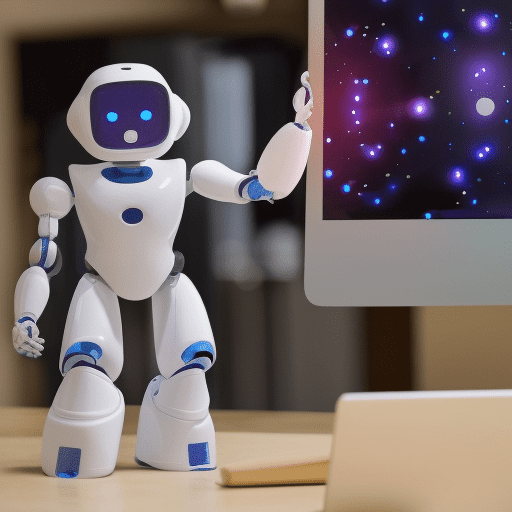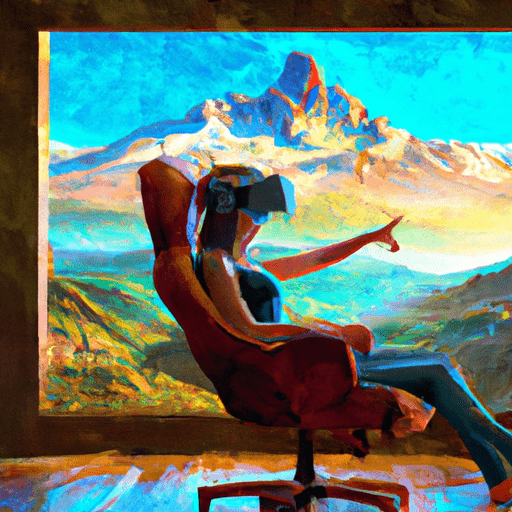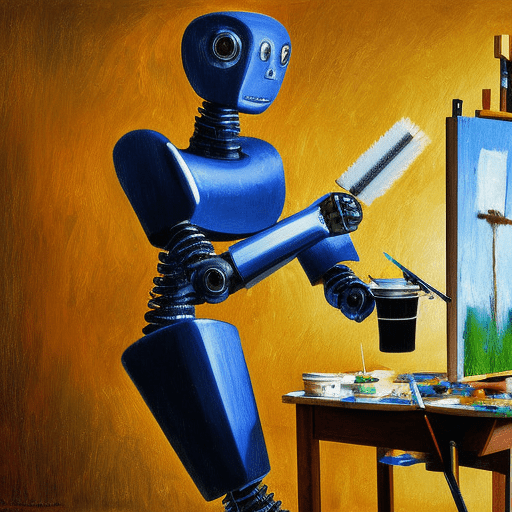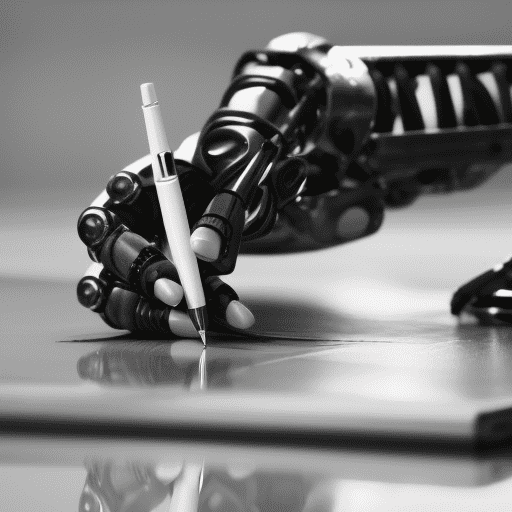Exploring the Past, Present, and Future of Open AI
The past present and future of Open AI is an exciting topic that has seen a lot of development and investment and discussion in recent years. From its humble beginnings as a research project, Open AI has grown to become one of the most innovative companies when it comes to Artificial Intelligence (AI) technology.
I have used ChatGPT, Jasper, Jasper Art, Bing, Edge browser, and Content at Scale which all use Open AI technology and I definitely see the benefits and how quickly the tech is evolving.
In this blog post, we’ll explore the history behind Open AI’s success story, take a look at what they offer today and discuss their plans for the future.
OpenAI have released ChatGPT Plus which is a paid plan that uses GPT 4 and which will get the new enhancements they are continuously releasing first.
We’ll also touch on competition for Open AI and Microsoft’s major investment in them. It promises to be quite an interesting journey so let’s dive right into exploring the past present future of open Ai together.
Table of Contents: Past, Present, and Future of OpenAI
- Open AI’s History
- Open AI’s Current Offerings
- Open AI’s Future Plans
- Competition for Open AI
- Microsoft investment in Open AI
- FAQs in Relation to Past Present Future of Open Ai
- Conclusion
Open AI’s History
Open AI was founded in 2015 by tech entrepreneurs Elon Musk, Sam Altman, Greg Brockman and Ilya Sutskever. The company’s mission is to develop artificial general intelligence (AGI) that can benefit humanity.
OpenAI’s goal is to create a world where everyone has access to the benefits of AGI technology without having to worry about its potential risks.
Since its inception, OpenAI has been at the forefront of developing cutting-edge technologies for machine learning and deep learning applications.
In 2016, they released Universe – an open source platform for training agents on virtual environments using reinforcement learning techniques. They also launched their first commercial product – OpenAI Gym – which provides developers with tools for creating reinforcement learning algorithms and testing them in simulated environments.
In 2017, OpenAI released GPT-2 – a powerful language model based on unsupervised deep learning techniques that can generate human-like text from raw data sources such as news articles or books. This breakthrough opened up new possibilities for natural language processing applications such as chatbots and automatic summarization systems.
In 2018, OpenAI unveiled their flagship product:
Dactyl – a robotic hand capable of manipulating objects with unprecedented dexterity and accuracy thanks to its advanced deep reinforcement learning algorithms developed by the team at Open AI Research Lab in San Francisco CA .
The same year they announced their partnership with Microsoft Azure Cloud Services which enabled them to offer cloud computing services powered by GPUs optimized specifically for running large scale machine learning models like Dactyl’s neural network architecture .
The following year saw further advances from the company when it released Spinning Up, an educational resource designed to help developers get started with reinforcement learning quickly.
This was followed shortly after by Roboschool, an open source software package allowing users to train robots in simulation before deploying them into real world scenarios.
Finally, 2023 marked another milestone achievement when Open AI achieved superhuman performance levels playing classic Atari games using only pixels as input through their development of AlphaStar – a multiagent system trained entirely through self play methods.
These achievements have cemented Open AI’s reputation as one of the leading players in artificial intelligence research today, paving the way forward towards more ambitious projects such as AGI development.
Open AI’s history is one of continual innovation and development, leading to a range of powerful tools that are now available. Moving on, let’s take a look at what Open AI currently offers.
Open AI’s Present Offerings
Open AI is a leading artificial intelligence (AI) research company that has been at the forefront of developing advanced technologies for over five years. The OpenAI Platform is their flagship product, which provides developers with access to powerful AI models and tools.
It also allows users to create their own custom AI solutions by leveraging pre-trained models or building from scratch.
Open AI GPT-3
Open AI’s current offerings include GPT-3, which is their most powerful language model yet. It can generate human-like text on any given topic with remarkable accuracy and speed.
This technology has already been used for tasks like automated customer service chatbots, natural language processing applications, content generation tools, etc., making it one of the most sought after solutions in the industry today.
ChatGPT
ChatGPT is an open source natural language processing (NLP) model developed by OpenAI that can generate human-like conversations in real time. This technology can be used to power virtual assistants, chatbots, and other conversational applications.
Additionally, ChatGPT can be integrated into existing systems such as customer service portals or online forums to provide more personalized interactions with customers and visitors.
Jasper AI (Jasper Chat) is a powerful copywriting tool that leverages OpenAI’s GPT-3.5 large language model (LLM) and additional software and AI to generate high-quality content quickly and accurately.
With the combination of artificial intelligence, machine learning, sentiment analysis, natural language processing (NLP) and natural language generation (NLG), Jasper is an essential tool for writers looking to scale their content strategies with ease.
Content at Scale is another product for bloggers writing long form content to create quickly using GPT AI.
This is my article comparing Jasper to Content at Scale.
Give Jasper AI a try today with special perk and free trial
Dall-E 2
Dalle 2 is another OpenAI offering that uses reinforcement learning algorithms to teach robots how to perform tasks autonomously without any prior knowledge of the environment they are operating in.
Dalle 2 enables robots to learn quickly and accurately complete complex tasks like picking up objects or navigating through unfamiliar environments without needing extensive programming or manual intervention from humans.
Jasper Art uses the latest technology, Dall-E 2 from OpenAI, for AI image generation. It enables users to quickly create unique visuals and artworks in seconds. The combination of advanced OpenAI technology and an intuitive user interface makes it a great tool for anyone looking to get creative with their visuals.
Special perk for using this link for Jasper Art free trial!


Open AI’s products are designed for both tech enthusiasts and tourists alike who want access to cutting edge technology but don’t have the technical know-how required for coding it themselves.
By providing easy-to-use tools and resources, Open AI makes it possible for anyone interested in exploring the world of artificial intelligence to do so without having an extensive background in computer science or engineering.
Open AI’s current offerings provide a glimpse into the future of Artificial Intelligence and its potential to revolutionize travel. As we look ahead, let us explore Open AI’s plans for the future.
This link is my blog about Jasper vs ChatGPT for writers.
Check out my page of blogs about AI virtual assistants including AI writers and art.
Open AI’s Future Plans
Open AI is an artificial intelligence research company that has been making waves in the tech world.
Founded by Elon Musk, Open AI’s mission is to develop advanced Artificial Intelligence (AI) technologies and make them available to everyone. As such, they have developed a range of products and services aimed at helping businesses and individuals alike benefit from the power of AI.
The future looks even brighter for Open AI as they plan to expand their product portfolio further with new developments like GPT 4 – an upgraded version of GPT 3 that has even more accurate results than its predecessor.
They are now also releasing entensions that can be used on top of GPT 4 and give it extra abilities such as surfing the web.
They are also licensing it’s API for companies who want to build their own software for their own companies.
In addition to this, Open AI also plans to partner up with other companies in order to bring more innovative solutions into play – including autonomous vehicles powered by machine learning algorithms or robots capable of performing complex tasks autonomously without requiring human intervention.
Competition for Open AI will be fierce as well since many big players are now entering the field – Microsoft being one example who recently invested $1 billion into OpenAI’s research efforts through its venture capital arm M12 Ventures .
With such heavy investments pouring in from some major corporations , it’s clear that there’s a lot riding on what comes out next from OpenAI .
Overall, it is safe to say that we can expect great things from Open AI in terms of advancing Artificial Intelligence technology over the coming years.
Whether it be through new partnerships or further development on existing projects, there is no doubt that we will see some exciting advancements come out soon enough.
Open AI’s future plans are ambitious and focused on furthering the development of artificial intelligence, but they will face competition from other players in the field as they strive to remain a leader. Now let’s take a look at who Open AI might be competing with.
Competition for Open AI
Open AI is a research laboratory focused on artificial intelligence (AI) and its applications. It was founded in 2015 by Elon Musk, Sam Altman, Greg Brockman, Ilya Sutskever and Wojciech Zaremba.
Open AI has made significant strides in the field of machine learning since its inception and continues to be at the forefront of innovation when it comes to developing new algorithms for autonomous systems.
However, Open AI faces stiff competition from some of the world’s largest tech companies such as Google, IBM and Microsoft who are all investing heavily into their own respective AI divisions.
Google’s DeepMind division and LaMDA is currently leading the way with groundbreaking advances in deep learning technology while IBM Watson has been making waves with its natural language processing capabilities.
Google recently announced Bard to compete with Microsoft’s Bing GPT based AI search engine. They also announced integrating their AI into multiple of their products including their productivity software.
Microsoft has invested heavily into OpenAI which could potentially give them an edge over other competitors in terms of resources available for development projects.
In addition to these major players, there are also numerous smaller startups that have emerged over recent years which specialize in specific areas such as robotics or computer vision technologies. These could pose a threat to OpenAI’s dominance if they manage to gain enough traction within their respective markets.
Ultimately, it remains unclear who will come out on top when competing against each other for market share. However, one thing is certain; OpenAI will need to continue innovating if they want to remain competitive against these larger rivals as well as any potential newcomers entering this space in the near future.
Microsoft investment in the future of Open AI
Microsoft has recently made a major investment in Open AI, an artificial intelligence research company. This move is part of Microsoft’s larger plan to expand its presence in the world of artificial intelligence and machine learning. The two companies have announced that they will be working together on various projects, including Azure cloud services and Office 365 applications.
The partnership between Microsoft and Open AI will allow both companies to leverage each other’s strengths for their respective projects. For instance, Microsoft can use Open AI’s expertise in natural language processing (NLP) while Open AI can take advantage of Microsoft’s vast computing resources through Azure cloud services.
Furthermore, they are looking into how they can integrate their technologies into Office 365 applications such as Outlook or Word so that users may benefit from improved search capabilities or automated tasks like summarizing emails or documents quickly and accurately using NLP algorithms developed by OpenAI researchers.
Open AI + Bing = Bing GPT : Google killer ?
Microsoft is integrating OpenAI’s technology to make Bing GPT a more powerful search engine.
By integrating OpenAI’s ChatGPT chatbot into Bing, Microsoft hopes to create a smarter search engine that can better understand natural language queries and provide more accurate results. This could help Microsoft compete with rival Google by providing users with a more intuitive and efficient search experience.
The integration of ChatGPT AI into Bing launched in February 2023, and the two companies have been collaborating on the project since 2019 when Microsoft made a $1 billion investment in OpenAI. In fact they did state that it is using GPT 4.
Additionally, Microsoft has plans to integrate an AI text-to-image model to Bing powered by OpenAI’s DALL-E 2. There is already an app called Microsoft Designer that uses DALLE-E.
Microsoft also announced at same time they are integrating GPT into their Edge browser as well as Skype.
By incorporating OpenAI’s technology into its products, Microsoft is aiming to revolutionize its Office suite of products as well as its search engine Edge. This could potentially cause a titanic shift in the tech industry as it would give users access to more intuitive and efficient tools for their everyday tasks.
FAQs in Relation to Past Present Future of Open Ai
How was AI in the past?
In the past, AI was used mainly for research and development purposes. It was mostly limited to simulations and data analysis. As technology advanced, so did AI’s capabilities; it started being applied in more practical applications such as robotics, autonomous vehicles, facial recognition systems, natural language processing (NLP), and machine learning algorithms.
Over time these technologies have become increasingly sophisticated with improved accuracy and speed of operations. Today AI is a powerful tool that can be used to automate tasks, provide insights into complex problems, improve decision-making processes, optimize customer experiences and much more.
Does Elon Musk still own OpenAI?
No. He donated money initially. Then he left for the reasons below in next FAQ.
Why did Elon leave OpenAI?
Elon Musk left OpenAI in 2018 to focus on his other projects, such as Tesla and SpaceX. He wanted to ensure that the resources available at OpenAI were used for research into artificial intelligence and robotics rather than commercial applications.
His departure was also motivated by a desire to avoid potential conflicts of interest between his own companies and those of OpenAI’s investors. Ultimately, he felt that it was best for him to step away from the organization so that its mission could be better served without any distractions or competing interests.
When did Elon Musk leave OpenAI?
Elon Musk left OpenAI in 2018. He had co-founded the company with Sam Altman and Greg Brockman in 2015, but decided to leave due to disagreements about the direction of the company. Musk wanted OpenAI to focus on creating artificial general intelligence (AGI) while other members of the team preferred a more narrow scope. In 2023, he announced his departure from OpenAI’s board of directors as well.
Conclusion
In conclusion, Open AI has come a long way from its humble beginnings and is now an established leader in the world of Artificial Intelligence. Its current offerings are impressive and its future plans look even more promising with Microsoft’s investment.
It will be interesting to see how Open AI continues to shape the future of AI technology as it moves forward into uncharted territory. The past, present, and future of Open AI are all exciting prospects that have us looking forward to what comes next.
Tired of ChatGPT being down when you need it for work, or frustrated by the back and forth of pasting to edit your documents, then Jasper AI may be right for you. It’s the perfect tools for writers to speed up their work and provides a software layer on top of ChatGPT.
And that applies to art with Jasper Art which uses Dall-E with an improved software interface as well.
If you sign up with the link provided here, you can get special perks and a free trial.



